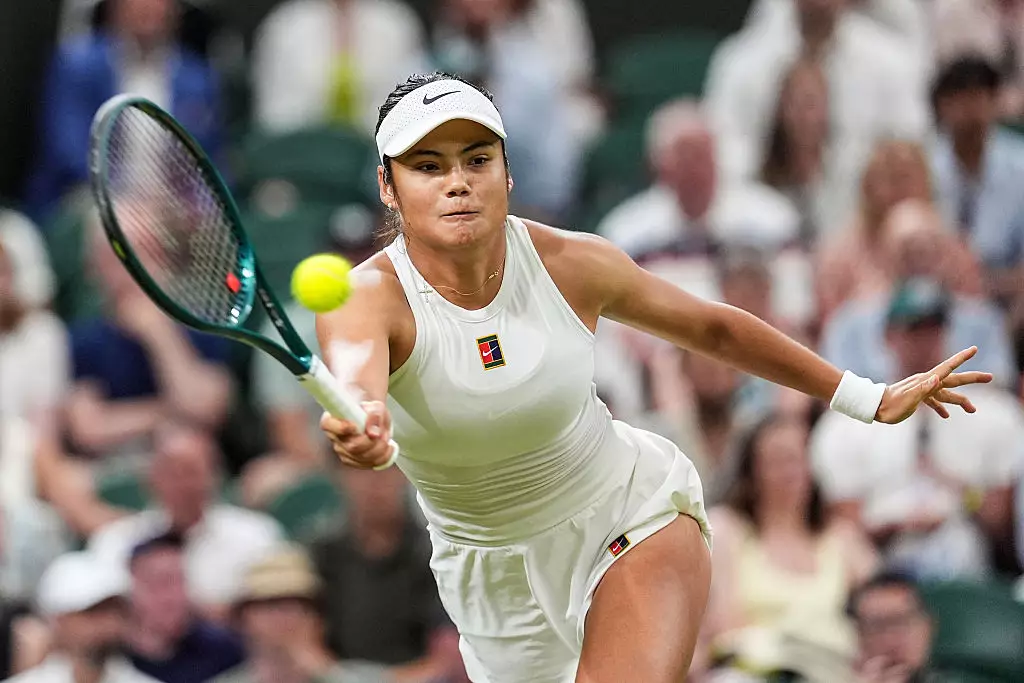In recent years, sports organizations have increasingly turned to artificial intelligence to modernize officiating processes, promising enhanced accuracy and efficiency. Tennis, a sport that prides itself on precision and fairness, has been at the forefront of this technological revolution. The introduction of electronic line calling systems (ELC) at prestigious tournaments like Wimbledon exemplifies this shift. While such advancements are aimed at reducing human error and streamlining officiating, their implementation often sparks heated debate, exposing underlying tensions between tradition and innovation. This transition reflects broader societal questions about our reliance on technology and the balance between automation and human judgment in high-stakes environments.
The Reality of Technological Imperfection
Despite the promises of accuracy, AI-based systems are not infallible. The recent Wimbledon tournament has highlighted their vulnerabilities. When players like Emma Raducanu and Jack Draper voiced concerns over incorrect calls, they underscored a fundamental issue: current AI technology cannot yet match the nuanced perception and judgment of experienced human officials. These errors, whether misjudged balls or missed out calls, not only affect individual points but also question the integrity of the sport itself. An AI system’s susceptibility to environmental factors, such as sunlight glare or technical glitches, reveals that automation remains a work in progress. For an elite sport like tennis, where a single point can dramatically alter the outcome, such inaccuracies can undermine trust and overshadow athletic performance.
The Human Element: Essential or Obsolete?
In sports, the human touch often embodies the spirit of sportsmanship and adaptability—traits that machines have difficulty replicating fully. The removal of human line judges in favor of automated systems has drawn criticism for stripping away this tactile element. Players have complained about poor audio cues and the inability to rely on visible signals, as well as experienced firsthand the frustration of system failures during critical moments. The incident involving Sonay Kartal and Anastasia Pavlyuchenkova serves as a stark reminder that technology can fail, sometimes at the worst possible moment, forcing officials to step back in and preserve the match’s fairness. These episodes suggest that a hybrid approach—integrating AI with human oversight—may be more effective. While AI can enhance consistency, humans currently remain essential for interpreting complex scenarios and maintaining the human connection that defines sports.
The Cultural Resistance and Future of AI in Tennis
The resistance to fully embracing AI in tennis signifies deeper cultural resistance to change within traditional sports communities. Critics argue that replacing humans diminishes the essence of the sport—its unpredictability, human intuition, and the personal touch. Debates around Wimbledon’s technological shifts reflect larger societal debates about the dehumanization of decision-making. Nonetheless, voices like Debbie Jevans of the All England Club argue that electronic systems are simply an evolution, claiming they are more precise than human officials. However, the ongoing glitches and controversies suggest that the technology is not yet ready to replace human judgment entirely. A balanced approach—where AI assists rather than replaces—might be the most pragmatic path forward. This compromise could harness the benefits of technological innovation while safeguarding the sport’s integrity and tradition.
The ongoing experiments with AI in tennis pose critical questions about the nature of fairness and the role of technology in human-centric pursuits. While AI brings undeniable advantages—such as speed, objectivity, and consistency—it also introduces new vulnerabilities that can threaten the fairness and emotional core of competitive sports. Recognizing that technology is a tool—not a replacement for human insight—is vital as tennis and other sports grapple with their digital transformation. A future where AI and humans collaborate harmoniously could redefine the standards of accuracy and fairness, but only if stakeholders acknowledge the current limitations and prioritize the preservation of the sport’s intrinsic qualities.

